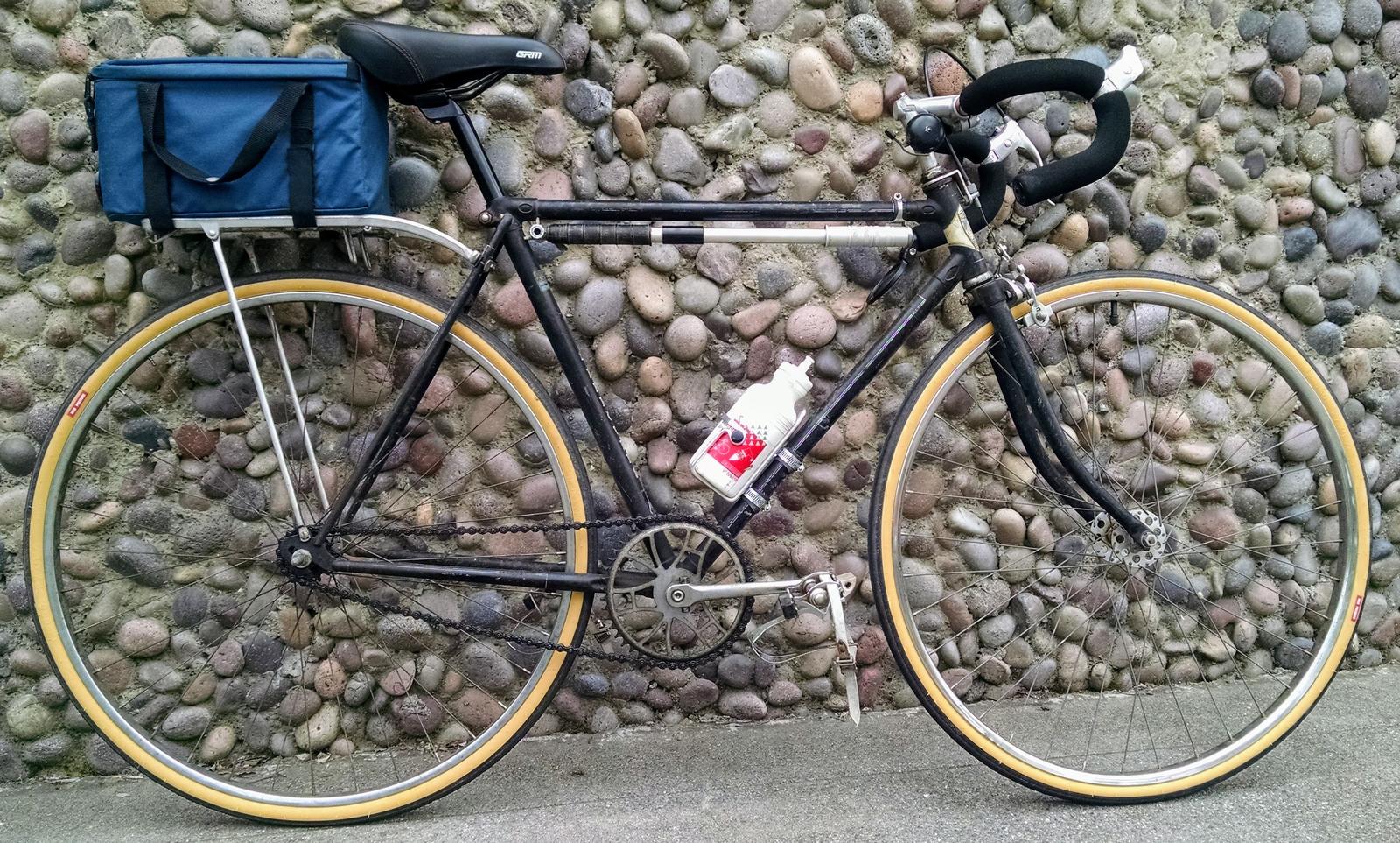
A fixed gear bicycle is a single speed bike with no freewheel. If the back wheel is turning then the pedals are turning. No coasting.

A fixed
gear bicycle is a single speed bike with no freewheel. If the
back wheel is turning then the pedals are turning. No coasting.
I worked as a bicycle mechanic at Keswick Cycles in Glenside Pennsylvania for three summers in 1978-1980. They had been in business for almost half a century and the owner, Norman, was a bit of a pack rat. One day I rummaged thru a huge junk pile in the side room that was taller than me and I found this Hercules frame. I immediately decided that this would be my new bicycle. It was just a frame, crankset, and a rusty sawed off seat post. No fork.
The owner's son, Kenny, was more than happy to let me clear out some of the clutter; so he let me have the frame, and he found me a used front wheel, and a pair of new old stock BSC threaded quill pedals. Kenny also let me have a variety of other old used parts I found laying around. I had to buy a few things like spokes for the rear wheel, chain, rear sprocket, and a seat. I got it on the road for about $30.
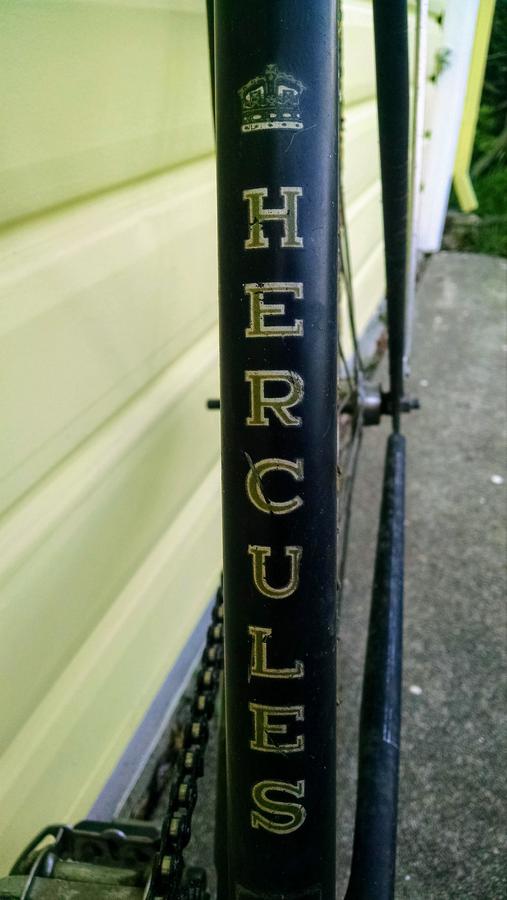
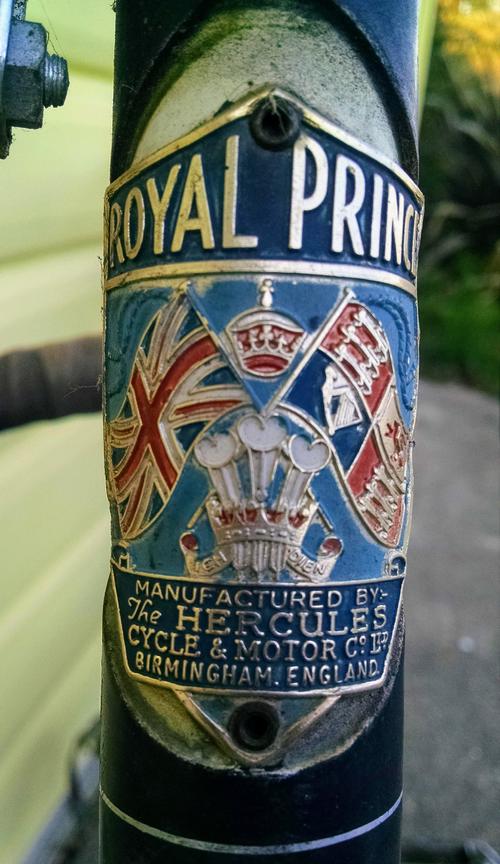
Originally it would have had upright handlebars, fenders, a 3-speed hub, and 26" x 1 1/4" tires. I put on 27" x 1 1/4" wheels, which don't have fender clearance, but they raise the bottom bracket .5" for better cornering clearance and allow the use of short pull brakes for better braking.
It is probably a 1955 model, possibly a 1954. Here is a 1955 Royal Prince with the same head badge, seat post decal, & paint. The 1956 Royal Prince had the same head badge, but different paint and decals. The 1953 Hercules catalog does not show a Royal Prince model.
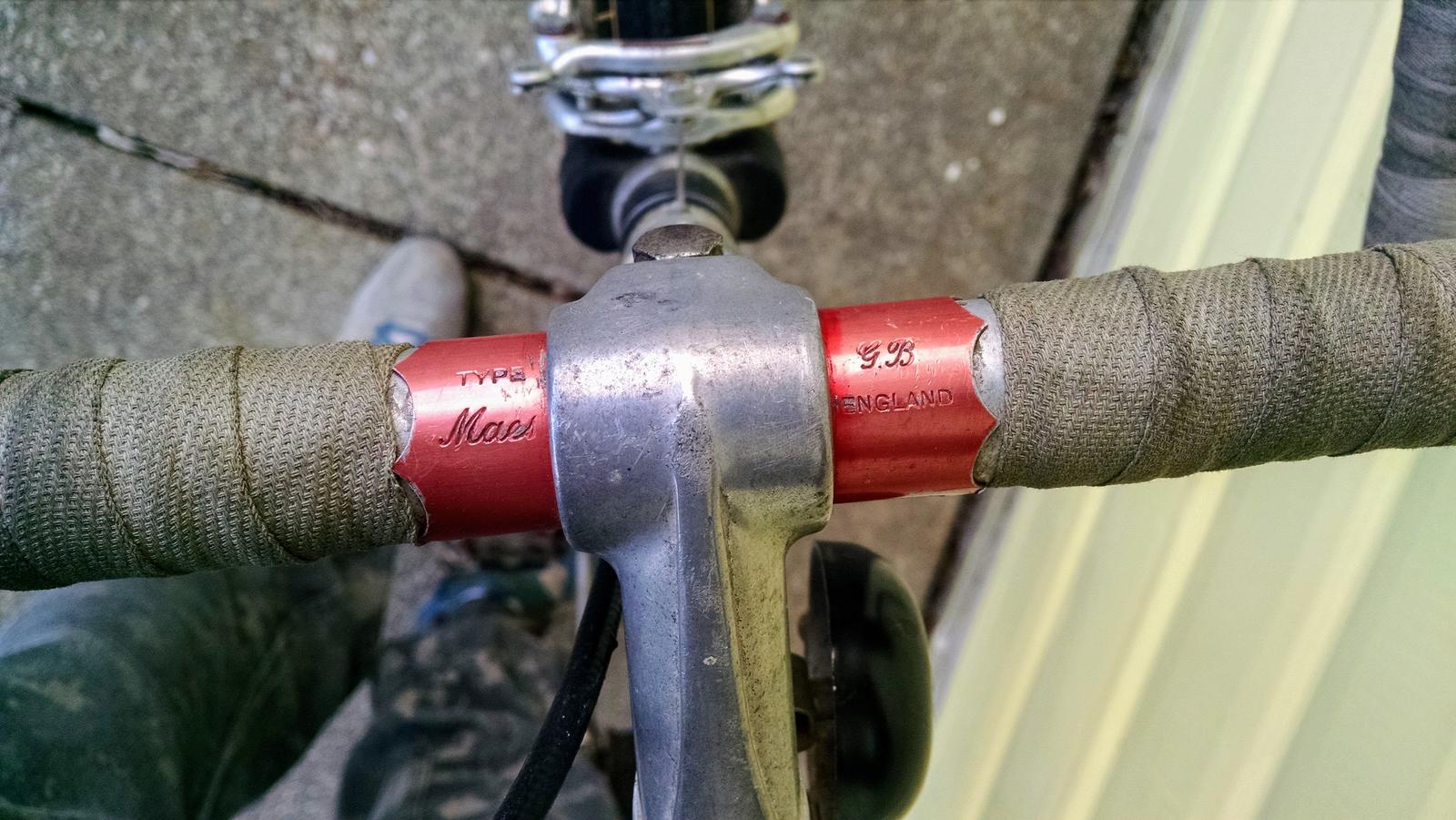
The "GB" brand bars & stem aren't original, but they are from England and they are period correct (50's or early 60's). They were laying on the floor under the rack where we hung up the bikes that were in for repair. No telling how many years they had been sitting there.
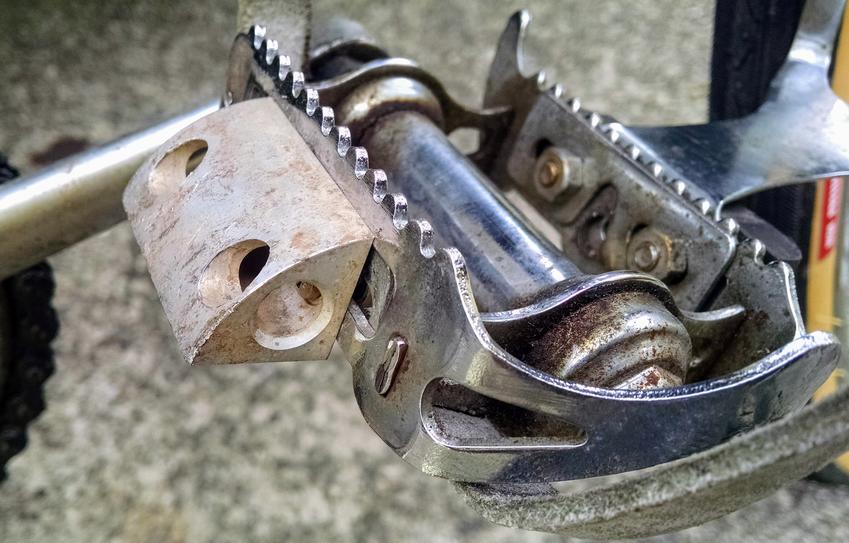
Is this a "Toe Flip" or "Pedal Flip"? Either way they really help getting into the toe clips. I machined this from 2" diameter aluminum.
|
"Best Quality Steel Throughout". Can't get better than the best. |
Toeclip clearance is over rated. |
By the 1930s Hercules was the world's largest bicycle manufacturer with three factories in England. In 1946 Hercules was sold to their long time tubing supplier Tube Investments (TI), makers of Reynolds tubing. In the 1960s TI consolidated several bike brands under the Raleigh brand, but Hercules bicycles are still made and sold in India.
I found some forks that fit, but they have much less curvature (offset/rake) than the original forks had. This frame has very slack 67 degree seat/head tube angles. The short offset forks and the slack head tube angle give it the front end geometry of a downhill mountain bike. The steering is heavy and floppy at very low speeds, but it gets really stable once I get going. When cornering at speed it banks over and tracks very smooth & steady.
The quill pedals are on the narrow side, most street shoes are too wide for them. The bottom bracket spindle is pretty short, so it has a narrow stance (38 mm chainline). Along with the modest length 165mm cranks and a very high bottom bracket (50 mm drop) these all combine for seriously excellent cornering clearance.
It would make a terrible match sprint bike, but in the '80s I put on
a set of lightweight tubular wheels and did some time trials with it.
The seatpost angle is a bit slack, but otherwise it was OK. I like it
as a training bike. A fixed gear doesn't let you get too lazy on hills
or in headwinds.
Old English bikes used British Standard Cycle (BSC) threads. What Americans call "English" threads were never used by the English. They used British Standard threads. What Americans call "English" threads are strictly American (more properly called UTS, but previously called SAE). The British switched from British Standard to the Metric system starting in the 1960s, but Raleigh was still using some BSC threading into the 1980s.
"Cycles" (with and without a motor) used British Standard Cycle (BSC) threads instead of the regular BS threads, which were also called Witworth or British Standard Witworth (BSW).
Old French bikes used all metric threads, but for some reason the Japanese, and later the Chinese, both adopted the English/American sizes and they became the international standard for many bicycle parts.
The BSC pedal threads on my bike are 9/16" x 20 TPI BSC. Modern pedals are American 9/16" x 20 TPI UTS threads. The BSC threads are about .1 mm or .004" smaller diameter than the American UTS threads. The BSC pedal threads in the cranks could probably be tapped to modern 9/16" x 20 TPI UTS threads if needed. Note that standard American 9/16" thread sizes are either 9/16" x 18 TPI (regular) or 9/16" x 24 TPI (fine). Bicycles are in between with 20 TPI. Completely non-standard.
Bottom Bracket (BB) threads come in two threadings "English" and "Italian". The English BB threads are BSC threads (1.375" x 24 TPI), but they are often called BSA threads. BSA stands for Birmingham Small Arms company which made rifles, bicycles, & motorcycles. BSA merged with Triumph and BSA/Triumph went out of business in the 1970's, but they hadn't made bicycles for many years before that. I don't know why, of all the British bicycle companies, BB threads are named after BSA. The good news is my bike is compatible with modern bottom bracket assemblies. Modern "English" cranksets are BSC threads for the bottom bracket and American (UTS) threads for the pedals.
Italian BB threads are 36mm x 24 TPI (TPI = threads per inch - mixed English/metric units).
Freewheels and track cogs also use the same BSC 1.375" x 24 TPI threads as the bottom bracket.
Most modern bikes use Metric sizes for the axles and brakes, making the modern bike a mix of Metric, (non-standard) American, and (obsolete) British threads. In recent years there has also been a rash of new Bottom Bracket standards. What a mess.
BS hex nuts and hex bolt heads are also a different size than the
equivalent American fractional sizes, requiring different sized
wrenches. At the bike shop I had three sets of wrenches on my bench:
American, British Standard, and Metric.
|
frankb@frankb.us
Back to my bicycle page Back to my home page |
|